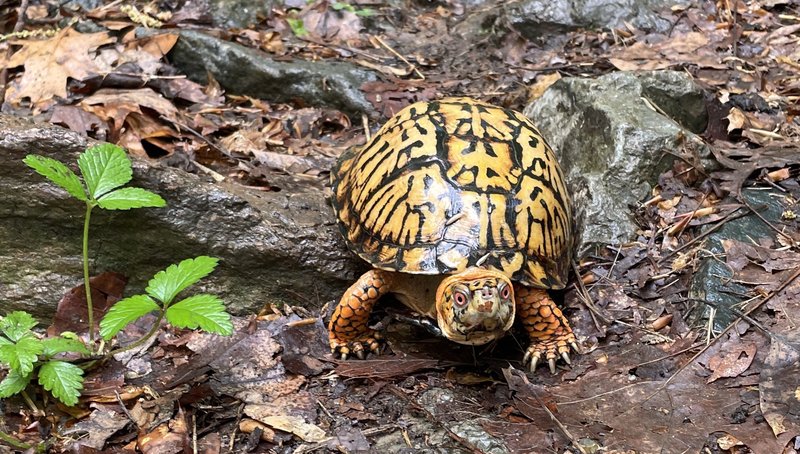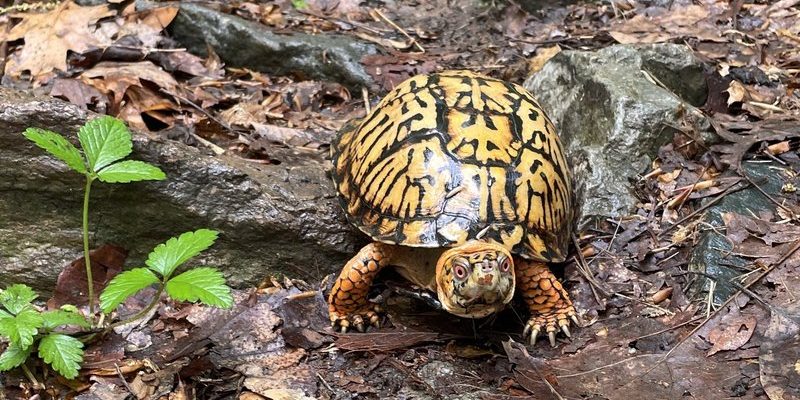
So, what exactly makes box turtles so special? Well, they’re more than just cute little reptiles with a knack for hiding in their shells. They help maintain the health of their ecosystems by influencing plant communities and even being part of the food web. Let’s dig deeper into the role of box turtles and explore how they interact with their habitat, what they need to thrive, and why they’re often considered indicators of environmental health.
Box Turtle Basics: What Makes Them Unique?
Let’s start with the essentials. Box turtles belong to the family Emydidae and are known for their distinctive hinged shells, which allow them to completely enclose themselves for protection. There are several species of box turtles, with the Eastern Box Turtle being the most recognized. What makes them particularly fascinating is their ability to adapt to various habitats—from forests to meadows and even urban areas.
You might be wondering what they eat. Box turtles are omnivores, meaning their diet includes a mix of plants, insects, and small animals. Think of them as nature’s clean-up crew, helping to control insect populations while also dispersing seeds from the fruits they consume. They have a slow metabolism, which allows them to survive even in less-than-ideal conditions, but that doesn’t mean they don’t need specific resources in their habitats to thrive.
Another key aspect of box turtles is their lifespan. These creatures can live for decades, sometimes reaching ages of 50 years or more! This long life allows them to become integral parts of their ecosystems, influencing everything from plant growth to animal interactions over time.
The Box Turtle’s Role in Seed Dispersal
One of the most important roles a box turtle plays in its habitat is seed dispersal. As they munch on berries and other fruits, they inadvertently help plants propagate. Think of it as a natural gardening service. Box turtles eat fruits and then pass the seeds through their digestive systems, which can often enhance germination rates. This means that a single box turtle can contribute to the growth of new plants, ensuring that the environment remains lush and diverse.
In a way, you can think of box turtles as little horticulturists wandering through the landscape. They help maintain the health of flora and encourage biodiversity, which is critical for creating vibrant ecosystems. Without these turtles, certain plant species might struggle to grow in various areas, highlighting their importance in maintaining ecological balance.
Box Turtles as Prey: Supporting the Food Web
While box turtles are often seen as adorable little critters, they also serve as prey for various predators. Birds of prey, raccoons, and even snakes may target them. This might sound grim, but it’s an essential function in nature. By being part of the diet for these larger animals, box turtles help sustain the food web.
You might think that being prey would be a disadvantage, but it’s a natural part of life. By contributing to the diets of larger predators, box turtles help keep those populations in check. This balance keeps the ecosystem running smoothly. When one part of the food web is impacted, it can have ripple effects throughout the entire community, highlighting the interconnectedness of all species.
Habitat Requirements for Box Turtles
Understanding what box turtles need in their habitats is crucial for their survival. They prefer environments with a mix of sunlight and shade, as they’re ectothermic, meaning they rely on external sources of heat to regulate their body temperature. A habitat rich in leaf litter, low shrubs, and scattered vegetation provides essential cover and food sources.
When it comes to water, box turtles need access to clean water for drinking and soaking. Wetlands, ponds, and streams can all serve as vital habitat features. Unfortunately, habitat destruction due to urbanization and agriculture poses a significant threat to their populations. Preserving these natural areas is important not just for box turtles, but for the overall health of the ecosystem they inhabit.
Conservation Challenges Facing Box Turtles
Sadly, box turtles face numerous challenges today. Habitat loss ranks at the top of the list. As humans expand into natural areas, we disrupt their homes and food sources. Additionally, road mortality is a major issue; many turtles get hit by cars while crossing roads in search of food or mates.
Pollution also plays a role in their decline. Chemicals from fertilizers and pesticides can contaminate their habitats, affecting their health and reproductive success. Here’s the thing: protecting box turtles means protecting the places they call home. Local conservation efforts often focus on habitat restoration and public education to promote understanding of their needs and challenges.
The Importance of Box Turtles in Ecosystem Health
Let’s tie it all together. Box turtles are more than just charming residents of our natural spaces; they act as indicators of ecosystem health. Because they are sensitive to environmental changes, their populations can signal the overall well-being of their habitats. If box turtles are thriving, it’s a good sign that the ecosystem is balanced and healthy. Conversely, a decline in their numbers may hint at underlying problems, such as habitat degradation or pollution.
This makes it crucial for conservationists and the public to pay attention. Protecting box turtles isn’t just about saving a single species; it’s about safeguarding entire ecosystems. By ensuring that they have the right environments to live in, we can help maintain the biodiversity that supports all life on Earth.
Box turtles quietly contribute to their habitats in ways we often take for granted. From seed dispersal to being part of the food web, they play essential roles in maintaining ecological balance. As their habitats face growing threats, it’s up to us to advocate for their protection and the health of our ecosystems. By understanding the importance of box turtles, we can ensure that future generations will enjoy their presence in the wild. So, the next time you spot one of these charming reptiles, take a moment to appreciate all they do for the environment.

